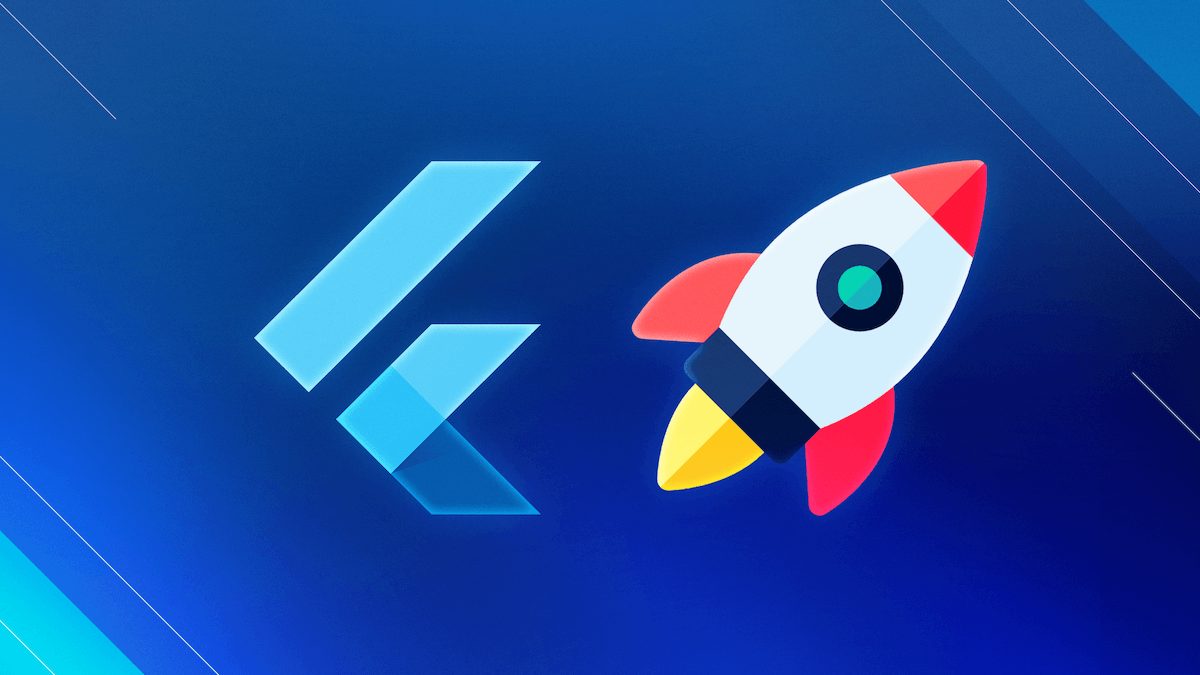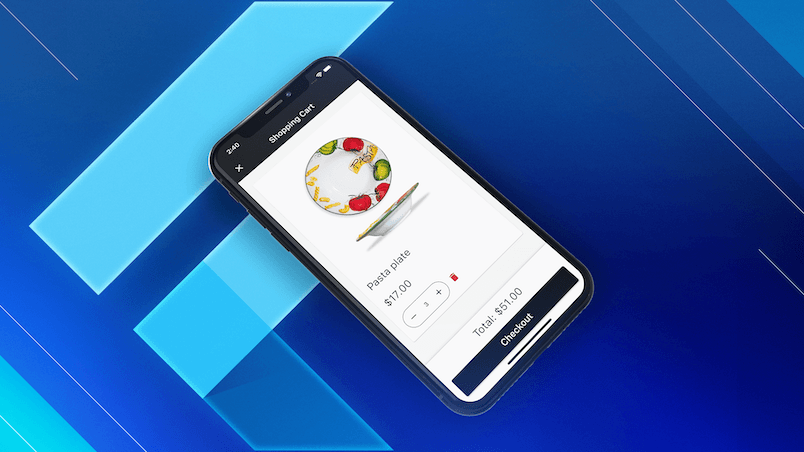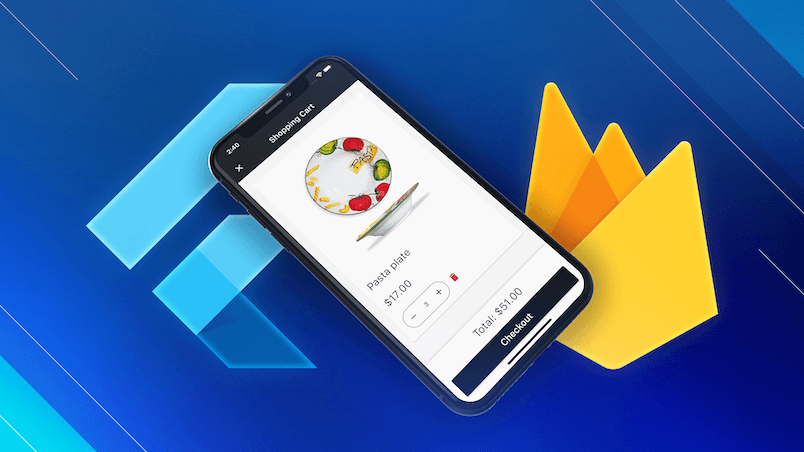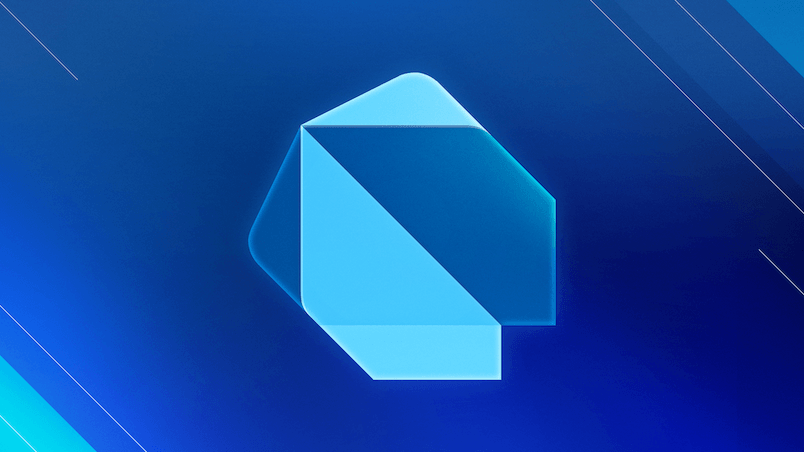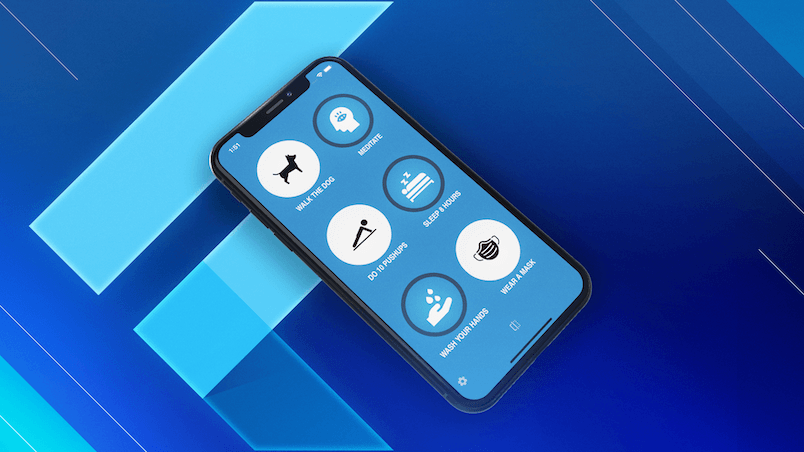Update: Riverpod 3.0 was released in September 2025. To learn what's changed, read: What's new in Riverpod 3.0.
First impressions matter—especially when users launch your Flutter app for the first time. A glitchy startup or a poor onboarding experience can frustrate users, leading to bad reviews or even uninstalls.
So, how do you ensure your app's startup code is rock-solid, handles errors gracefully, and scales to support features like deep links or URL-based navigation?
In this article, we’ll start simple and build towards a robust, production-ready solution. Here’s the game plan:
- Handling App Startup Errors in
main: The basic (and naive) approach. - Improved Error Handling with a
StatefulWidget: Adding loading UI and retry functionality. - Asynchronous Dependency Initialization with Riverpod: A more scalable solution.
We’ll start by implementing a StatefulWidget to display a loading UI while initializing the app. You’ll also learn how to handle errors and allow users to retry if something goes wrong.
Next, we’ll explore eager provider initialization with Riverpod. This technique lets you preload dependencies asynchronously and access them synchronously later using requireValue.
Finally, we’ll tweak the setup to ensure the flow supports URL navigation and deep links without breaking.
By the end, you'll have a robust app initialization strategy that’s ready for production. 🚀
Ready to dive in? Let’s go! 👇
Handling App Startup Errors: The Basics
Let’s start with a simple example:
void main() async {
await someAsyncCodeThatMayThrow();
runApp(const MaterialApp(home: MainApp()));
}
What happens if the code above throws an exception?
The app will fail to call runApp and end up stuck on the splash screen—leaving your users confused and frustrated. Ouch! 😱
To improve this slightly, we can wrap the code in a try-catch block:
void main() async {
try {
await someAsyncCodeThatMayThrow();
runApp(const MaterialApp(home: MainApp()));
} catch (e, st) {
// TODO: register the global error handlers: https://docs.flutter.dev/testing/errors
log(e.toString(), stackTrace: st);
runApp(const MaterialApp(home: AppStartupErrorWidget(e)));
}
}
Now, if something goes wrong, we log the error and show an AppStartupErrorWidget with an appropriate error message. This provides some feedback to the user instead of just hanging on the splash screen.
The Limitation
While this approach is better than nothing, it’s still far from ideal. Why? Because it doesn’t allow the user to retry. If the startup process fails, the only option is to close and restart the app—a frustrating experience.
Let’s see how we can improve on this!
Improved Error Handling with a StatefulWidget
To enhance the user experience, let’s tackle a few key requirements for app startup:
- Display a loading screen during initialization.
- If initialization fails, show an error message with a “Retry” button.
- If initialization succeeds, show the main app UI.
We can handle these scenarios—loading, error, and success—by creating a custom StatefulWidget called AppStartupWidget. This widget will encapsulate the app initialization logic and manage the different UI states.

Implementation
Here’s a basic structure for AppStartupWidget:
class AppStartupWidget extends StatefulWidget {
const AppStartupWidget({super.key});
@override
State<AppStartupWidget> createState() => _AppStartupWidgetState();
}
class _AppStartupWidgetState extends State<AppStartupWidget> {
// declare state variables
@override
void initState() {
unawaited(initializeDependencies());
super.initState();
}
Future<void> initializeDependencies() {
try {
// async initialization
await someAsyncCodeThatMayThrow();
// TODO: set success state
} catch (_) {
// TODO: set error state
}
}
@override
Widget build(BuildContext context) {
/*
* if (success) return MainApp()
* if (loading) return AppStartupLoadingWidget()
* if (error) return AppStartupErrorWidget(error, onRetry: () { ... })
*/
}
}
With this widget in place, we can simplify the main() method to:
void main() {
runApp(const MaterialApp(home: AppStartupWidget()));
}
Next Steps
To fully flesh out this widget, we could:
- Model the states: Use a sealed class or an enumeration to represent the three states (
Loading,Error, andSuccess). - Handle async logic: Populate
initializeDependencies()with our async initialization code and update the state accordingly. - Switch between states in the UI: Use a
switchexpression in thebuild()method to render the appropriate widget for each state. - Add retry functionality: Provide a callback in the error state to retry initialization.
While this approach works well for stateful initialization, it’s not sufficient if your app needs to initialize dependencies and make them easily accessible throughout the app. For that, we need to leverage a dependency injection framework or a service locator.
This is where Riverpod comes into play. Let’s see how it can help us manage dependencies asynchronously. 👇
Asynchronous Dependency Initialization with Riverpod
Previously, we used this simple initialization code:
await someAsyncCodeThatMayThrow();
But in a real-world app, you'll likely have dependencies that need to be ready for later use. Riverpod providers are perfect fit for this job. For example:
// A regular provider for accessing a dependency that is initialized *synchronously*
@Riverpod(keepAlive: true)
FirebaseAuth firebaseAuth(FirebaseAuthRef ref)
=> FirebaseAuth.instance;
For dependencies that need asynchronous initialization, such as SharedPreferences, you can use a FutureProvider:
// A FutureProvider for accessing a dependency that is initialized *asynchronously*
@Riverpod(keepAlive: true)
Future<SharedPreferences> sharedPreferences(SharedPreferencesRef ref)
=> SharedPreferences.getInstance(); // returns a Future
Here, we want the dependency to be initialized as soon as the app starts.
But keep in mind, Riverpod providers are lazily initialized by default—they are built when first used, not when declared. And the documentation says that if we want to eagerly initialize a provider, we can do so with a child widget.
Note how I’ve used
keepAlive: truein the declarations above. This makes sense for dependencies that are initialized only once, during app startup.
Eager Provider Initialization with a Child Widget
Let’s take it a step further and create a custom appStartupProvider that centralizes all asynchronous initialization:
@Riverpod(keepAlive: true)
Future<void> appStartup(Ref ref) async {
ref.onDispose(() {
// ensure we invalidate all the providers we depend on
ref.invalidate(sharedPreferencesProvider);
});
// all asynchronous app initialization code should belong here:
await ref.watch(sharedPreferencesProvider.future);
}
Key points:
- Dependency handling: We eagerly initialize the
sharedPreferencesProviderby awaiting its.future. This trick is explained here. - Cleanup: The
onDisposecallback invalidates thesharedPreferencesProviderwhen theappStartupProvideris invalidated.
Now, let’s update the AppStartupWidget to use this provider:
/// Widget class to manage asynchronous app initialization
class AppStartupWidget extends ConsumerWidget {
const AppStartupWidget({super.key, required this.onLoaded});
final WidgetBuilder onLoaded;
@override
Widget build(BuildContext context, WidgetRef ref) {
// 2. eagerly initialize appStartupProvider (and all the providers it depends on)
final appStartupState = ref.watch(appStartupProvider);
return appStartupState.when(
// 3. loading state
loading: () => const AppStartupLoadingWidget(),
// 4. error state
error: (e, st) => AppStartupErrorWidget(
message: e.toString(),
// 5. invalidate the appStartupProvider
onRetry: () => ref.invalidate(appStartupProvider),
),
// 6. success - now load the main app
data: (_) => onLoaded(context),
);
}
}
Finally, simplify the main() method:
void main() {
// 1. load it when the app starts
runApp(const ProviderScope(
child: MaterialApp(
home: AppStartupWidget(
onLoaded: () => MainApp(),
),
),
);
}
How It Works
- Application Startup: When the app starts,
AppStartupWidgetis loaded. - Eager Initialization: The
appStartupProvideris eagerly initialized, along with all its dependencies (e.g.,sharedPreferencesProvider). - Loading State: While the provider is in a
loadingstate, we display theAppStartupLoadingWidget. - Error Handling: If initialization fails, the
AppStartupErrorWidgetis displayed with an option to retry. - Retry Logic: On retry, we invalidate the
appStartupProvider, triggering re-initialization. - Success State: Once initialization succeeds, the
onLoadedcallback is triggered, and theMainAppwidget takes the stage.
Accessing Eagerly-Initialized Providers with requireValue
Once MainApp is loaded, we can safely assume that the sharedPreferencesProvider is fully initialized. This allows us to access its value directly using requireValue:
@override
Widget build(BuildContext context, WidgetRef ref) {
final sharedPrefs = ref.watch(sharedPreferencesProvider).requireValue;
}
By using requireValue, you're essentially saying: "I know this provider was initialized asynchronously, but at this point, it is guaranteed to have a value."
This works seamlessly because the sharedPreferencesProvider (a FutureProvider) was eagerly initialized before MainApp was loaded. As a result, every descendant widget of MainApp can access it without additional checks.

Heads-up: If you try to access
requireValueon a provider that isn't ready yet, you'll hit an exception. If that happens, it's time to debug and revisit your assumptions.
Important Note About URL Navigation and Deep Links
So far, we've seen how to eagerly initialize dependencies by placing an AppStartupWidget at the top of the widget tree. However, things get trickier when your app needs to support URL navigation or deep links.
Why? Because apps that rely on URL-based navigation typically use a MaterialApp.router with a GoRouter (or equivalent) for routing. Unfortunately, the AppStartupWidget doesn’t handle this requirement—it only manages app initialization.
The Solution: Introducing a RootAppWidget
To support URL navigation and deep links, we can introduce a top-level RootAppWidget that configures the router while still handling app startup. Here’s how:
void main() {
runApp(const ProviderScope(
// * Use RootAppWidget, not AppStartupWidget
child: RootAppWidget(),
));
}
class RootAppWidget extends ConsumerWidget {
const RootAppWidget({super.key});
@override
Widget build(BuildContext context, WidgetRef ref) {
final goRouter = ref.watch(goRouterProvider);
return MaterialApp.router(
routerConfig: goRouter,
builder: (_, child) {
return AppStartupWidget(
onLoaded: (_) => child!,
);
},
...,
);
}
}
How It Works
With this setup, the GoRouter instance is initialized as soon as runApp is called. This ensures your app can process deep links and URL navigation immediately.
But there's one trick! Can you spot it?
The MaterialApp.builder is key to this setup. It allows us to wrap the router’s child widget with the AppStartupWidget without interfering with the routing logic. This ensures that:
- The app startup logic runs before the main app UI loads.
- Deep links and URL-based navigation are processed correctly from the start.
Real-World Example
Here's a demo from my Time Tracker app, where I test URL-based navigation with an artificial delay of one second during app startup:

This setup works very well in practice, so let's summarize how everything ties together.
Summary: Stateful App Initialization with Router
Here’s a diagram that captures the final setup:

To achieve a robust app initialization process with URL navigation and deep-link support, we need three key components:
MaterialApp.router: Configured withGoRouter(or an equivalent declarative routing solution) to handle URL navigation and deep links.AppStartupWidget: Wrapped inMaterialApp.builderto manage the app’s initialization flow while deferring to the router's child widget once initialization is complete.appStartupProvider: AFutureProviderthat eagerly initializes all asynchronous dependencies required during app startup.
By layering these components, we’ve created a production-ready solution that’s flexible enough to handle both complex routing and robust dependency handling.
Common Questions
Now that we’ve covered the essentials, let’s address some common questions you might have.
How to Eagerly Initialize Multiple Providers?
If your app requires multiple dependencies to be initialized upfront, the appStartupProvider is the perfect place to manage them:
@Riverpod(keepAlive: true)
Future<void> appStartup(AppStartupRef ref) async {
// all asynchronous app initialization code should belong here:
await ref.watch(sharedPreferencesProvider.future);
await ref.watch(sembastDatabaseProvider.future);
}
If the dependencies are independent of each other, you can even use Future.wait to initialize them concurrently. This can save precious milliseconds during startup:
@Riverpod(keepAlive: true)
Future<void> appStartup(AppStartupRef ref) async {
// await for all initialization code to be complete before returning
await Future.wait([
ref.watch(sharedPreferencesProvider.future),
ref.watch(onboardingRepositoryProvider.future)
]);
}
What About Programmer or Configuration Errors?
When it comes to dependency initialization, consider the type of failure you’re handling:
- If initialization might fail due to unexpected runtime errors (e.g., network issues, missing permissions), it makes sense to handle it in
appStartupso you can recover gracefully. - If initialization can only fail because of a programmer or configuration error, it’s better to perform it directly in
main. Why? Because such errors are typically non-recoverable and should be caught and fixed during development.
A classic example is Firebase initialization, which is prone to configuration errors if not set up correctly:
Future<void> main() async {
WidgetsFlutterBinding.ensureInitialized();
// * Initialize Firebase
await Firebase.initializeApp(options: DefaultFirebaseOptions.currentPlatform);
// * Entry point of the app
runApp(const ProviderScope(
child: MainApp(),
));
}
By keeping this code in main, any configuration issues (e.g., missing or misconfigured google-services.json or GoogleService-Info.plist) will surface immediately during development, allowing you to quickly identify and fix them.
How to Implement the Retry Logic?
When dealing with complex initialization logic, it’s often necessary to allow users to retry if something goes wrong. To achieve this, we can enhance the appStartupProvider by converting it into a Notifier with a retry() method:
@riverpod
class AppStartupNotifier extends _$AppStartupNotifier {
@override
Future<void> build() async {
// Initially, load the database from JSON
await _complexInitializationLogic();
}
Future<void> _complexInitializationLogic() async {
// some complex initialization logic
}
Future<void> retry() async {
// use AsyncValue.guard to handle errors gracefully
state = await AsyncValue.guard(_complexInitializationLogic);
}
}
Accordingly, the AppStartupWidget can be updated to call the retry method from the onRetry callback:
class AppStartupWidget extends ConsumerWidget {
const AppStartupWidget({super.key, required this.onLoaded});
final WidgetBuilder onLoaded;
@override
Widget build(BuildContext context, WidgetRef ref) {
// 1. eagerly initialize appStartupProvider (and all the providers it depends on)
final appStartupState = ref.watch(appStartupNotifierProvider);
return appStartupState.when(
// 2. loading state
loading: () => const AppStartupLoadingWidget(),
// 3. error state
error: (e, st) {
return AppStartupErrorWidget(
message:
'Could not load or sync data. Check your Internet connection and retry or contact support if the issue persists.',
// 4. retry logic
onRetry: () async {
await ref.read(appStartupNotifierProvider.notifier).retry();
},
);
},
// 5. success - now load the main app
data: (_) => onLoaded(context),
);
}
}
Can Any Provider be Eagerly Initialized?
No, not all providers should be eagerly initialized.
The appStartupProvider is specifically designed for initializing asynchronous dependencies that remain constant throughout the app's lifecycle. Examples include shared preferences, database connections, or configuration files.
Providers that may change state over time (e.g., user authentication status or real-time data streams) should not be eagerly initialized. Doing so could lead to unwanted rebuilds or performance issues, as their state updates dynamically after the app has started.
How to Transition Between the Splash, Loading, and Main UI Screens?
By default, a Flutter app shows a native splash screen until runApp is called. You can configure this splash screen using a package like flutter_native_splash.
To ensure a smooth transition between the splash screen, loading UI, and the main app UI:
- Match the Styles: Customize your Flutter loading screen to visually match the native splash screen, creating the illusion of continuity.
- Add Transitions: Overlay the loading screen with subtle animations or progress indicators to keep users engaged.
- Animate Into the Main UI: Once initialization is complete, use a fade, slide, or scale animation to transition from the loading screen to the main app UI.
This approach ensures a polished, professional user experience while minimizing jarring transitions during app startup.
Can I Use Provider Overrides as a Simpler Alternative for Asynchronous Initialization?
The old way of doing things was to declare a normal provider that throws an UnimplementedError by default:
@Riverpod(keepAlive: true)
SharedPreferences sharedPreferences(SharedPreferencesRef ref) =>
throw UnimplementedError();
Then, in the main function, we'd override the provider with its initialized value:
void main() async {
final sharedPreferences = await SharedPreferences.getInstance();
runApp(ProviderScope(
overrides: [
sharedPreferencesProvider.overrideWithValue(sharedPreferences)
],
child: const MainApp(),
));
}
This method effectively injects pre-initialized dependencies into the ProviderScope before the app starts.
When Should You Use This Approach?
If you’re working with an older codebase, you might encounter this pattern—or variants that use ProviderContainer and UncontrolledProviderScope for eager initialization. While it works, it has limitations:
- No Retry Capability: If the initialization fails (e.g., due to a runtime error), there’s no built-in mechanism to retry or recover gracefully.
- Error Handling: It assumes that initialization will always succeed, which might not be a safe assumption for all dependencies.
Should You Still Use It?
This approach is fine if you're 100% confident that the initialization will always succeed. Dependencies like SharedPreferences or static configuration files are good candidates because they rarely fail in production.
In this article, I only used
SharedPreferencesas an example for illustration purposes. In practice, it's ok to asynchronously initializeSharedPreferencesinsidemain().
However, if there’s any chance of failure (e.g., network-based initialization, database migrations), the stateful AppStartupWidget approach is a better choice. It provides more flexibility for error handling, retries, and user feedback during app startup.
Conclusion
A smooth and delightful onboarding experience is your chance to impress your users and set the tone for your app. To achieve this, your app startup logic needs to be robust, handle errors gracefully, and provide a seamless transition into the main app.
Here’s a quick recap of the techniques we covered:
- Use an
appStartupProviderto initialize all asynchronous dependencies, leveragingawaitand.future. - Eagerly initialize the
appStartupProviderinside a top-levelAppStartupWidgetand userequireValueto access asynchronously initialized dependencies once they are guaranteed to be ready. - Provide a loading UI, handle errors gracefully, and include a retry mechanism for recoverable failures.
- For apps with URL navigation or deep-linking, integrate your
AppStartupWidgetwithinMaterialApp.builderto support declarative routing while managing startup logic.
That’s it! You now have a repeatable process for writing robust app startup code.
Real-World Example
Looking for a practical implementation? Check out my time-tracking app on GitHub, where I’ve applied these concepts to a real-world project.
What’s Next?
While we’ve covered the essentials of app startup logic, there’s still more to explore. For instance, we haven’t discussed error monitoring or crash reporting, which are critical for identifying and resolving issues in production. I dive deeper into these topics (and more) in my latest course. 👇
New Course: Flutter in Production
When it comes to shipping and maintaining apps in production, there are many important aspects to consider:
- Preparing for release: splash screens, flavors, environments, error reporting, analytics, force update, privacy, T&Cs
- App Submissions: app store metadata & screenshots, compliance, testing vs distribution tracks, dealing with rejections
- Release automation: CI workflows, environment variables, custom build steps, code signing, uploading to the stores
- Post-release: error monitoring, bug fixes, addressing user feedback, adding new features, over-the-air updates
My latest course will help you get your app to the stores faster and with fewer headaches.
If you’re interested, you can learn more and enroll here. 👇

